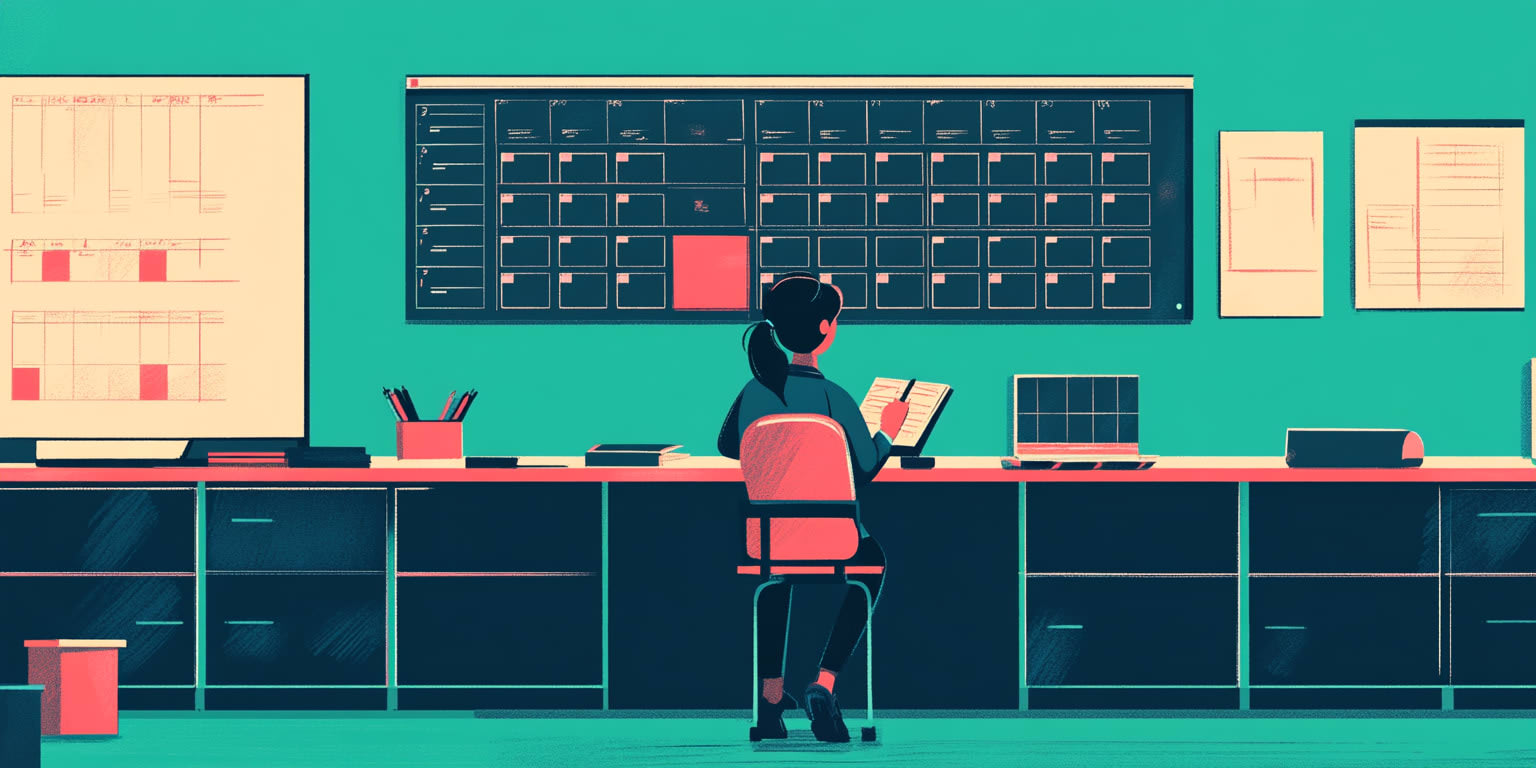Is automatic timetabling any good?
Automatic timetabling has revolutionized the way schools handle scheduling. By automating tasks that used to take days or even weeks, it promises efficiency and precision. But does it always deliver? While automatic solvers have undeniable strengths, there are times when the human touch remains essential. In this post, we’ll explore what automatic timetabling does well, where it falls short, and how humans and solvers can work together to create the best timetables possible.
Where they shine:
1. Getting fast results
For schools managing hundreds of teachers, classrooms, and constraints, creating a timetable manually can be daunting. They can generate draft timetables in minutes, freeing up time for manual adjustments.
2. Handling complex rules perfectly
Automatic solvers thrive on logic and precision. They ensure constraints like "teacher A doesn't work on Monday mornings" or "science labs are only used for lab-based subjects" are adhered to flawlessly.
3. Solid starting point
Many experienced timetablers use solvers as a way to generate initial drafts. These drafts provide a foundation that humans can refine and adapt, combining automation’s speed with human insight.
Where they can fall short:
1. They can feel like a black box
Automatic solvers can feel like a "black box." You input your data, press "solve," and receive a timetable—but without knowing why certain decisions were made. For example, why did Teacher A end up with three late classes in a row? Without transparency, making adjustments or troubleshooting becomes difficult.
2. Struggle with too many constraints
The more constraints you add, the slower solvers can become. In extreme cases, they might take hours—or even days—to produce a solution. For timetablers facing tight deadlines, this can be a significant drawback.
3. They’re not great at trade-offs
While solvers are great at balancing rules, they can struggle with nuanced prioritization. For instance, imagine two teachers, A and B, both requesting their preferred time slots for the same morning period. Teacher A prefers mornings to avoid late classes, while Teacher B needs that period to prepare for a weekly extracurricular program impacting students across the school.
A solver might treat both requests equally and fail to resolve the conflict in a meaningful way—or even reject both requests entirely. A human scheduler, however, can assess the broader context and recognize that Teacher B’s request has a greater impact on the school community. While neither teacher may get their ideal schedule, the human timetabler can ensure the decision aligns with the school’s priorities and communicates the rationale clearly.
4. They don’t take account of emotional reactions
Even a perfectly logical timetable can feel unfair. For instance, a solver might assign Teacher A late classes every day because it’s "optimal" for the overall schedule. However, this decision could lead to frustration or resentment. A human scheduler can mitigate these emotional reactions by:
- Rotating less desirable slots among staff.
- Offering explanations for decisions.
- Making small adjustments to maintain morale and foster goodwill.
The verdict: a tool, not a replacement
Automatic solvers are powerful, but they’re not a magic bullet. They’re best used as tools to complement, rather than replace, human expertise. A solver’s speed and precision can lay the groundwork for an efficient schedule, but human timetablers bring the context, nuance, and judgment needed to refine it into something truly workable.
At Schedula, we understand this balance. That’s why our app combines:
- Transparent algorithms: Clearly show how decisions are made to help you understand and adjust.
- Best in class manual tools: Intuitive drag-and-drop features make it easy to adapt schedules as needed.
